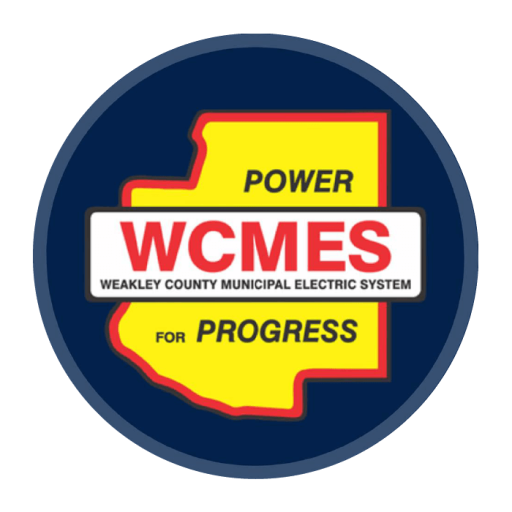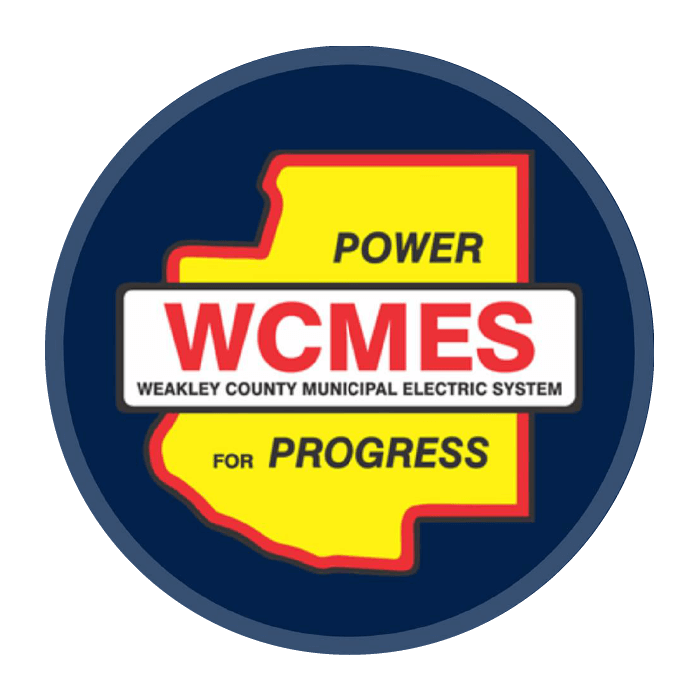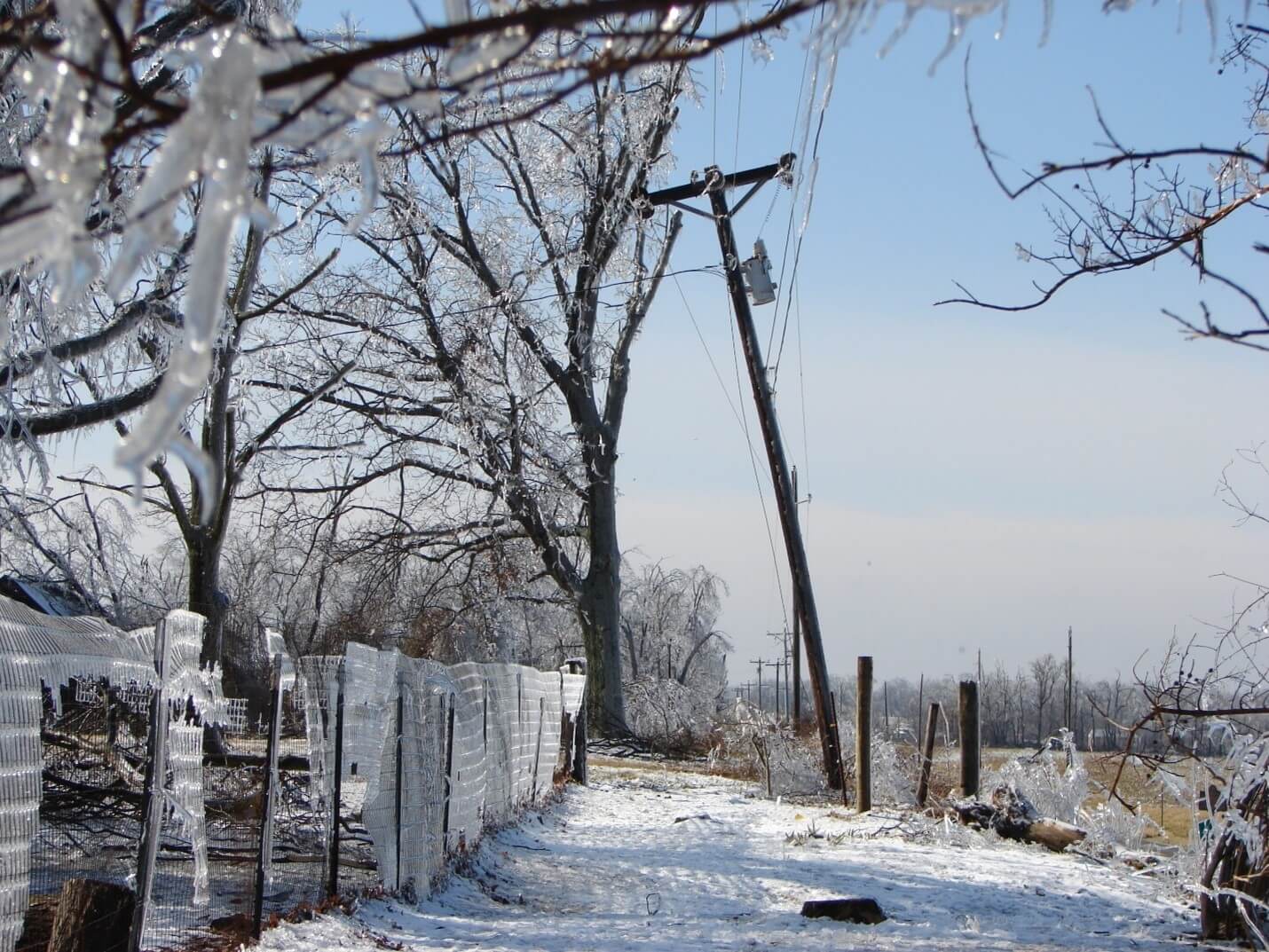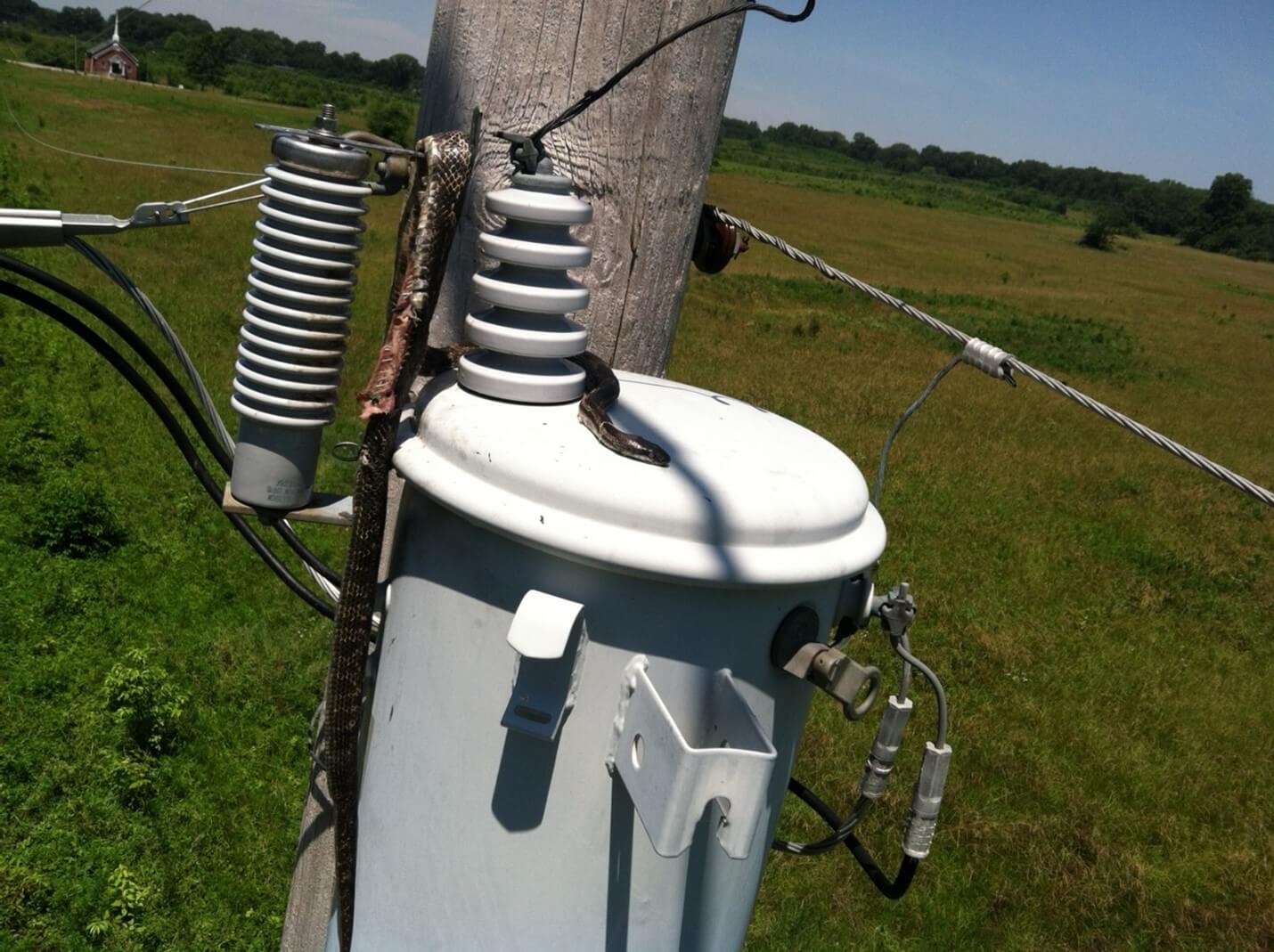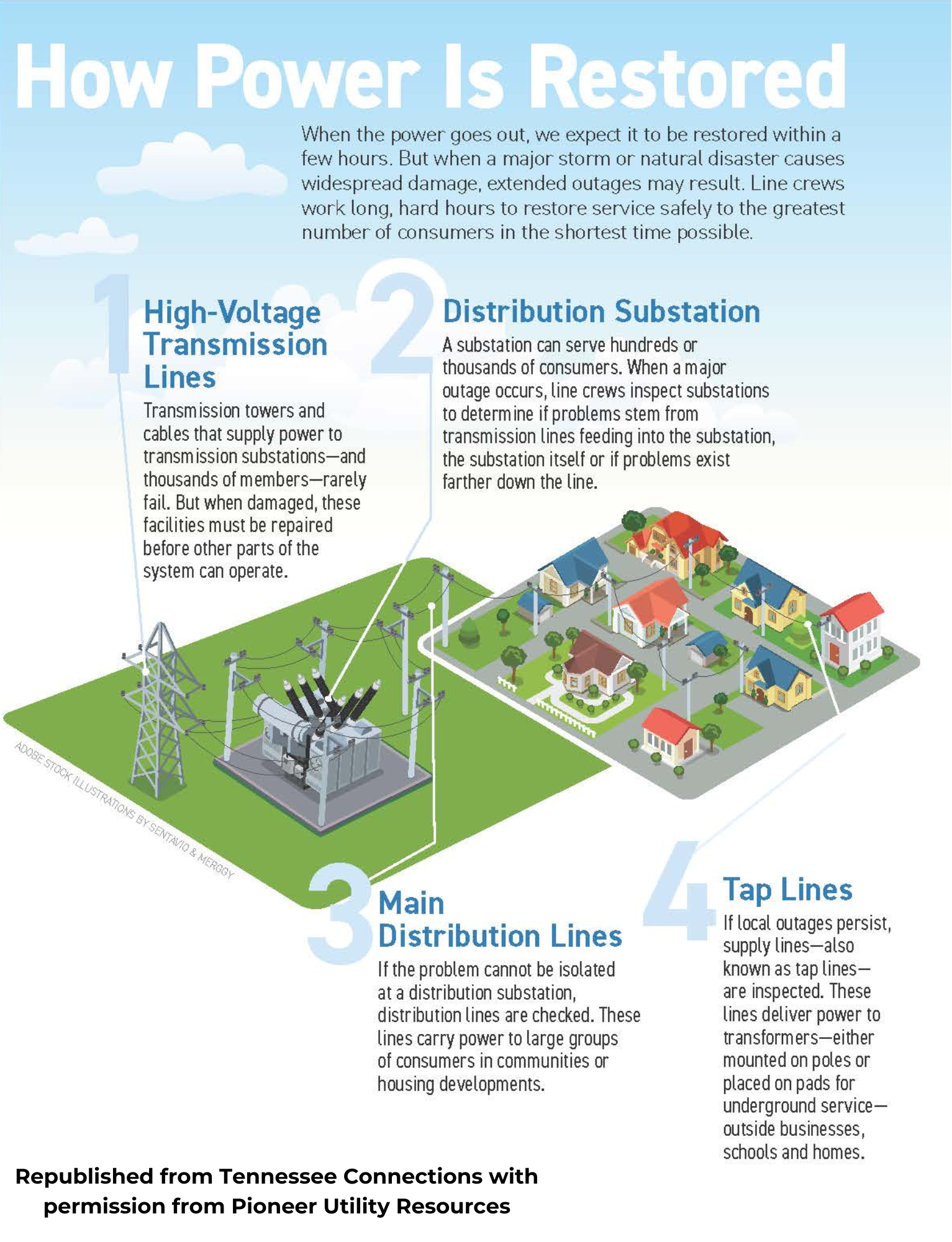If you experience a busy signal or if your call goes unanswered, it means we are receiving a high volume of calls, due to a widespread outage.
Before You Report Your Power Outage
Electric Service is one of the most dependable items you can buy. Rarely will you find anything else as reliable, but there are times when it goes off.
A power outage can, only be momentary, last a few minutes, or can last for days. Outages can be caused by lightning striking the lines, trees falling across the wires, vehicles running into poles, or animals such as birds or squirrels coming into contact with the energized system. Sustained outages most likely will occur when severe thunderstorms and tornadoes snap poles and tangle lines. But probably the most severe outage is caused by an ice storm. An ice storm is generally widespread and the most difficult to repair. The resulting outage can last for days.
First thing to do when your lights go out:
- Check to see if your neighbor’s lights are off too.
- Check the fuses/breakers in your switch box panel.
- If fuses or breakers are okay; call the WCMES office. A dispatcher is on duty 24 hours every day.
Report Your Power Outage
Call the WCMES office at (731) 587-9521 or (800) 553-7409 to report your power outage. A Dispatcher is on duty 24 hours every day.
If you experience a busy signal or if your call goes unanswered, it means we are receiving a high volume of calls, due to a widespread outage.
Be prepared to give your:
- Name
- Address
- Telephone Number
- Length of Time the power has been off.
This will help determine the extent of the outage and aid in speedy repair of service. It is also helpful to report anything that you may have seen or heard at the time the power went out.
Once your outage is reported:
Turn off major electrical appliances that were on, especially air conditioners or electric heat. This will permit the power to be out back on-line without it being knocked off again by automatic current limiting devices that protect the System from overloads.
Priorities for Restoration
Fortunately, most power outages can be resolved fairly quickly, or within a few hours at most. However, widespread outages caused by severe storms, tornados or ice storms can wreak havoc on the electric power system. During these events, WCMES will have all available personnel called in to work. In more severe situations, we may also call in help from other utilities.
WCMES will survey all the outage locations and prioritize the restoration work as follows:
- The first consideration is the physical aspect of the damage. Each transmission line feeds multiple substations. Each substation feeds multiple feeder lines, which in turn, feed multiple tap lines. Each tap line feeds multiple customers through individual service lines. In order for power to flow, these segments must be repaired in that order.
- Second, we consider the number of customers affected by each damage location. If two feeder lines are out, we will work on them simultaneously if we have enough manpower. If not, the one serving the most customers would be the higher priority.
- Third, we consider the amount of repair work needed. If two tap lines are out, and one has a broken pole, while the other has three broken poles, the one with less damage will be repaired first.
- Where possible, priority will be given to circuits which provide power to health care facilities, hospitals, nursing homes, water treatment plants, emergency services, etc.
Our Engineering Department is constantly re-evaluating the priority list as areas are restored and crews become available, but our guiding principle remains to restore the largest number of customers in the shortest amount of time.
We appreciate your patience, and suggest you visit the link below to help prepare for power outages.
Food and Water Safety During Power Outages and Floods
Food & Safety For Power Outages
Long Term Outages
